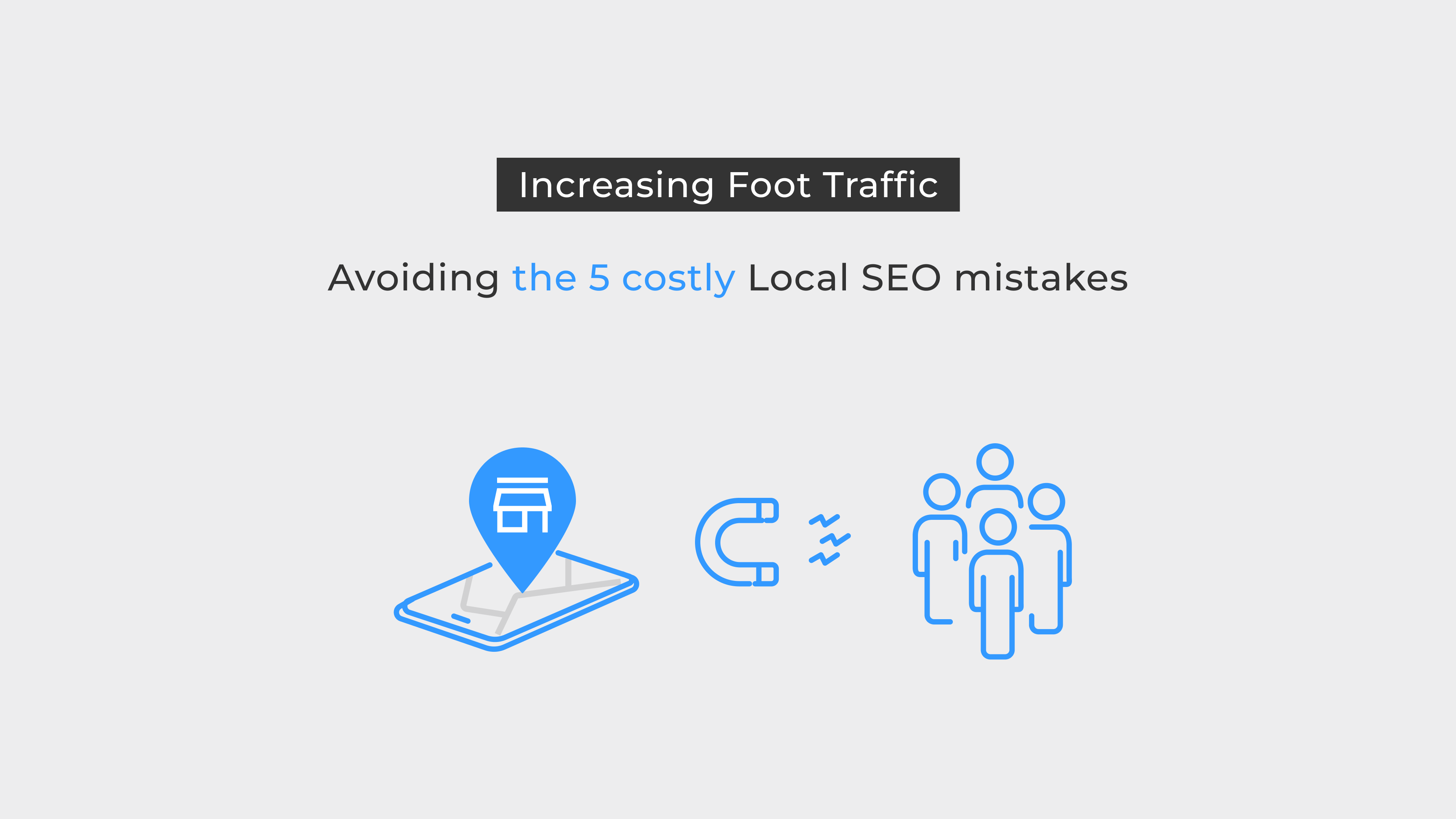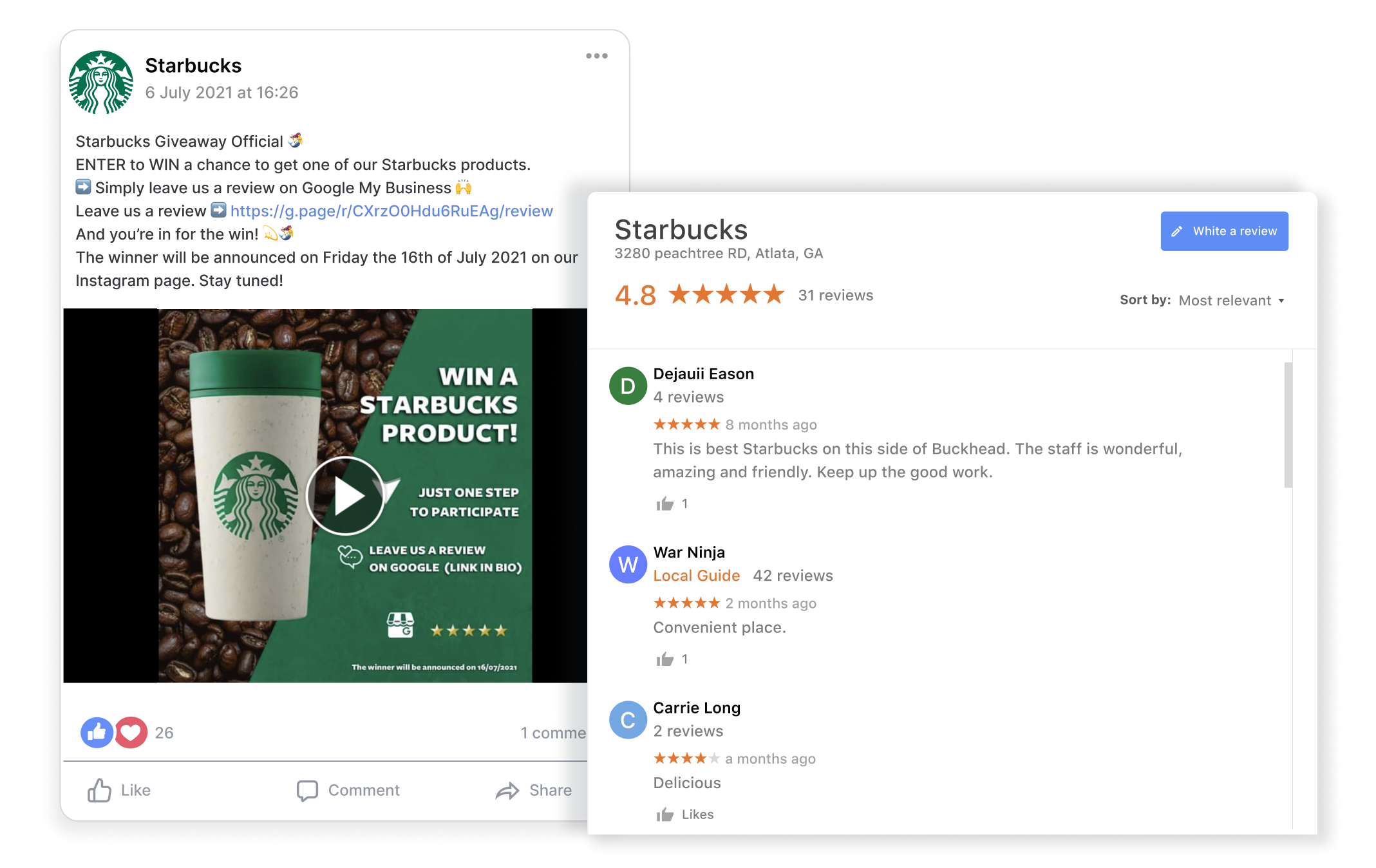Local SEO mistakes can cost businesses dearly. Businesses of all sizes, from multi-location chains to mom-and-pop shops, often make the same errors that hurt their online visibility and sales. In this article, we'll reveal the 5 costly local SEO mistakes that businesses should avoid in order to boost foot traffic.

1. Underestimating Google Business Profile (GBP)
Google Business Profile is a free but game-changing tool for managing online presence across Google Search and Google Maps. Moz studies show that businesses with missing or incorrect information in their local listings can lose up to 69% of potential customers.
Even if you’ve claimed your GBP listings but haven't taken the time to do a proper Google Business Profile optimisation, you can expect a significant number of potential customers who search for businesses like yours online to miss your locations. This can also send a message of reluctance, raise questions about your reliability, and eventually lead to fewer customer.
*Tip. If you have multiple locations, make sure that each one has its own optimised listing to increase foot traffic. This will also give you a chance to appear in Google’s Local Pack which is a list of three top-rated local businesses that people will see in their search results.
2. Neglecting Local Listing Directories (Maps)
When it comes to foot traffic, overlooking your business's listings on maps is like shooting yourself in the foot, because most of your potential customers who are searching locations on Google or Apple maps are already in the later stages of the funnel.
This means that they are highly likely to take action and visit a business they find there. If they only find an outdated address or phone number on your map listing, they will most probably move on to your competitors in no time.
When it comes to more specialised local directories like Foursquare, Yellow Pages or TripAdvisor, it’s common for businesses to leave inconsistent or outdated information which often confuses search engines and reduces your business’s relevance to local queries.
*Tip: Check that your company's NAP (name, address, phone number), website URL, and hours of operation are correct across Google, Apple, and Bing maps. Use relevant keywords, add high-quality photos, encourage reviews and provide accurate information across all directories.
-min.png?width=795&height=503&name=local%20search%20ecosystem%20(1)-min.png)
3. Relying on Generic Content or Keywords
If your website has only a few generic pages and no localised content, you may be missing out on a large number of potential customers who are looking for your products or services.
Your target audience wants to be understood, and if you don't tailor your content to their language, mentality, and unique threats, you risk losing them to your competitors.
If you're managing a multi-location business operating across several cities, having the same content on each location page without localised keywords specifying the city or state where the business is located may be detrimental to your local SEO.
And it is not just about the search engines: customers may choose to go to a different business because your website does not speak to their specific needs in the language that best suits them.
*Tip: Make a content calendar with topics related to your area, such as local events, news, and trends. Incorporate location-specific keywords into your content to help search engines in determining the relevance of your pages to local search queries. Also, make sure that each of your locations has its own landing page.
4. Bypassing Negative Reviews
88% of respondents to a recent survey said they are more likely to do business with a company that responds to ALL of their reviews.
Negative reviews that go unanswered will most likely lower your overall rating and tarnish your reputation. Not to mention that your customers will doubt the quality of your products or services, resulting in lost foot traffic.
*Tip: Encourage customers to leave reviews and respond to all reviews, both positive and negative, promptly and professionally. Make sure to monitor and respond to reviews for each location separately to increase your foot traffic holistically.

5. Failing to Optimise for Mobile Devices
Mobile devices account for more than 60% of online traffic, so having a mobile-friendly website is just critical for driving foot traffic.
If a potential customer searches for a business like yours on their mobile device and your website is slow to load or difficult to navigate on a small screen, they are very likely to leave and go to a competitor right away.
Also, Google ranks mobile-friendly websites higher, so failing to optimise your website for mobile devices can result in lower search engine rankings that can easily translate into less foot traffic for your business.
*Tip: Make sure your website loads quickly and adjusts to fit the size of the user's screen, whether it's a phone, tablet, or desktop. Don’t forget to optimise your local landing pages for mobile by having your key business information like address, phone number, and operating hours in a clear and easy-to-read format.
Leveraging Automations
These challenge are even greater for multi-location businesses that need to manage and optimise multiple online listings across various platforms and avoid making costly errors like inconsistent business information, under-optimized listings or mismanaged reviews.
If your business has 10+ locations, make use of the modern automation tools like PinMeTo that provides businesses with one centralised platform for managing and optimising local visibility. By automating your local SEO, you can save time and ensure that your business information is accurate and consistent across all locations, resulting in increased foot traffic.
.jpeg?width=1200&height=655&name=Image%202023-08-10%20at%2014.33%20(2).jpeg)
To Sum Up
Local SEO is a vital tool for boosting foot traffic. By avoiding these 5 common mistakes, you can make certain that your business is more discoverable by local customers and attract them better. Remember to claim and optimise your GBP listings, make the most out of local directories, consistently publish localised content, manage your online reviews and leverage automations!
Looking for ways to level up your local visibility?
Give us an overview about your business below and we'll prepare a free local visibility audit
Lily Adamyan, March 03


